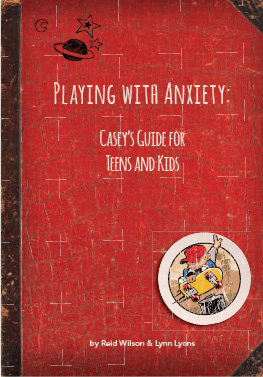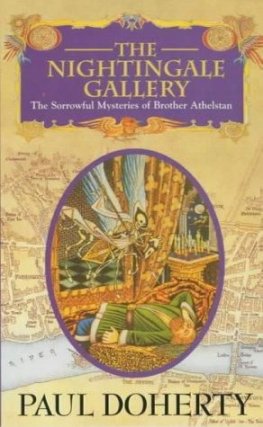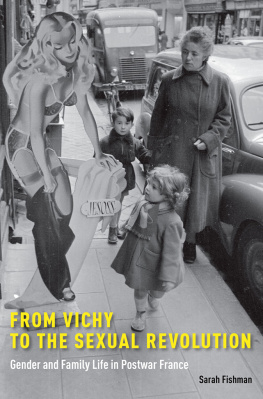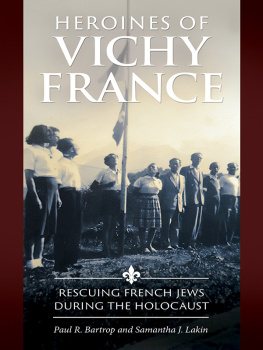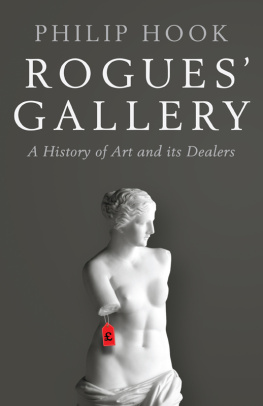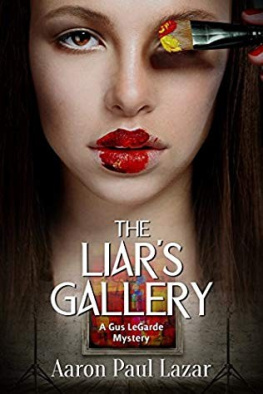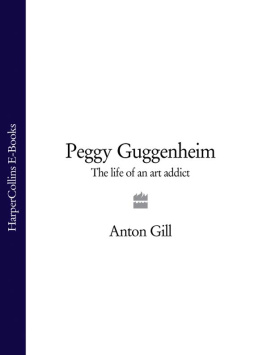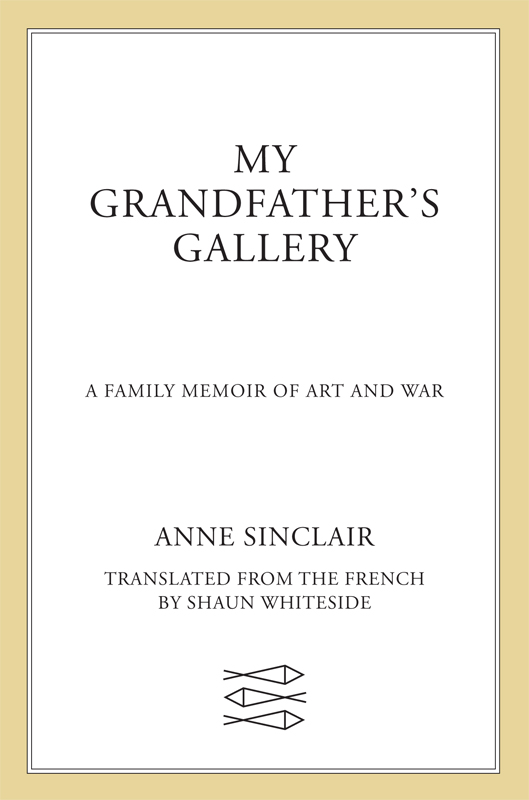Contents
Guide

The author and publisher have provided this e-book to you for your personal use only. You may not make this e-book publicly available in any way. Copyright infringement is against the law. If you believe the copy of this e-book you are reading infringes on the authors copyright, please notify the publisher at: us.macmillanusa.com/piracy.
To my mother,
Micheline Rosenberg-Sinclair
CONTENTS
PROLOGUE
On June 10, 2013, seventy-four years after my grandfather was forced to abandon his gallery located at 21 rue La Botie in Paris, I had the honor to unveil a white marble plaque on the faade of the building. The plaque bore his name and those of famous painters he used to show, many of whom were his closest friendsPicasso, Braque, Matisse, Lger among them. I was pleased that the plaque explained who my grandfather was and how the building, which had been devoted for twenty years to art, had been looted and transformed into a Nazi propaganda office during the German occupation of France.
The initiative was not mine. Rather, the owner of the building, of whom I had never heard, a certain M. Thlot, a French entrepreneur, who used to rent offices in the building, unexpectedly sent me a very moving letter. He had just been browsing in a bookshop and had seen a book whose title was the exact address of the building he owned. Curious, he bought the volumethe French edition of this book, 21, rue La Botie and was so moved by the story that he offered to have a plaque made for the front of the building, as is commonly done for famous French or foreign citizens who have left their mark on a place. Moreover, he renamed the main room inside the gallery, the one where exhibitions had been held before the war, the Paul Rosenberg Room. (Previous tenants had improbably called it the Mississippi Room.) These initiatives were so selfless and elegant that I accepted with joy.
The homage took place on a late afternoon, when the sun was shining over Paris, so many years after the Nazis had seized the gallery.
I could imagine how proud my grandparents, my uncle, and my mother, all of them now dead, would have been had they known their home would become celebrated in Paris, nearly three-quarters of a century after they were forced to flee arrest and deportation because they were Jewish and had refused to collaborate with the Nazi government that deemed modern painting degenerate art.
From now on, thanks to M. Thlot, everyone passing by will read the plaque, learn who the great art dealer Paul Rosenberg was, and discover how a criminal regime transformed my grandfathers gallery from a temple of beauty to a storeroom of depravity.
That is the story of this book.
INTRODUCTION
A day of rain and demonstrations, early 2010.
My neighborhood has been closed off by the police, the streets are jammed around the Bastille, and I am a prisoner in a car that I cant simply abandon in the middle of the road. At last, reaching a CRS (state police force) barrier blocking off the Boulevard Beaumarchais, near the Place de la Bastille, I wind down my window and ask the soaked cop if I can slip by like the other local residents. Your papers, he says wearily. Ive just moved in, and I havent got a drivers license or any ID with my new address on it. Hes sorry, he cant take my word for it. I need proof of my new place of residence. I cant get home.
* * *
A little while later I write to the office in Nantes that issues copies of birth certificates to French citizens born abroad. When it sends me the document, I go to the police station nearest to my house, quai de Gesvres, armed with the necessary papers: the birth certificate they have asked for as well as my recently renewed identity card , valid for another seven years.
A long queue. I take my ticket and wait for an hour and a half, long enough to look around at the people who have come to pick up IDs or passports and to hear the overworked clerks bluntly questioning the assembled supplicants. Madame, I must know whether or not you are from Guadeloupe! an old woman is asked in a tone that sounds a lot harsher than if she were asked, Are you originally from the Loire-Atlantique?
At last its my turn. I take the papers out of my file. It is then that a man behind the counter is astonished to discover that I was born abroad. I tell him that since I was born in New York, my administrative papers had to come from the offices in Nantes. He then asks for my parents birth certificates. I spare him their story: how they met after the war when my father had been demobilized from the Free French forces. I refrain from explaining that I was born in America by chance and stayed there for only two years before coming to France to spend the rest of my life here because my father couldnt find a job. Im an inch away from trying to find excuses for being born outside French territory.
On the other hand, I am feeling a bit surprised by his insistence on asking for my parents birth certificates. Besides, I add that on minelook, monsieurit clearly states that Anne S. is the daughter of Robert S. and Micheline R., both born in Paris, and that Im therefore whats known as French by affiliation. I also hand him my identity card, issued three years ago and valid until 2017, which means that its up to the administration to demonstrate that it is fraudulent, should it have any suspicion.
But he persists: the papers are necessary; there are new directives dating from 2009 for any citizen wishing to prove his Frenchness.
Are your four grandparents French? asks the man behind the counter.
Fearing I may have misheard, I ask him to repeat the question.
Your four grandparents, were they born in France, yes or no?
The last time people of their generation were asked this kind of question was before they were put on a train to Pithiviers or Beaune-la-Rolande! I say, my voice choking with rage, as I name the French camps where Jews were locked up by the French collaborating police before being deported by the Nazis to the death camps.
What? What train? What are you talking about? I must repeat that I need that document. Dont come back until you have it in your possession.
He dismisses me abruptly, pushing toward me my file, which by the purest coincidence is yellow, the very color of the star Jews had to wear on their clothes.
No point in giving a history lesson to a clerk to whom the Vichy laws mean nothing and to whom no one responsible for the new regulations has taken the time to explain that there are unfortunate turns of phrase, reminiscent of more troubled times, that might be best avoided.
I leave, more hurt than angry with this draconian desk clerk, feeling that my birth is somehow suspect, as if there were two categories of French people, some more French than others. Im also thinking about the absurdity of this situation, given that other officials, years ago, unaware of the doubts surrounding my origins, appointed me the model for their statue of Marianne, the symbol of France, worthy to take pride of place in their town halls.
This isnt just an administrative bore. Its the revival of an unhealthy debate about national identity that has been poisoning France in the last few years.
The incident calls to mind a memory from my youth. In the 1970s the Holocaust blew up in our faces, especially through discovery of the Vichy regimes involvement in the final solution. We might think of the famous interview in LExpress with Louis Darquier de Pellepoix, the general commissioner for Jewish questions, in which, from his exile in Spain, he stated without the slightest remorse that only lice were gassed in Auschwitz. This was the starting point for the inquiries and investigations led by the lawyer and author Serge Klarsfeldat Ren Bousquet, the general secretary of the Vichy police. It was a time when significant books on the subject were starting to be published, the first of them, Vichy France and the Jews , by the American historians Michael R. Marrus and Robert O. Paxton.


